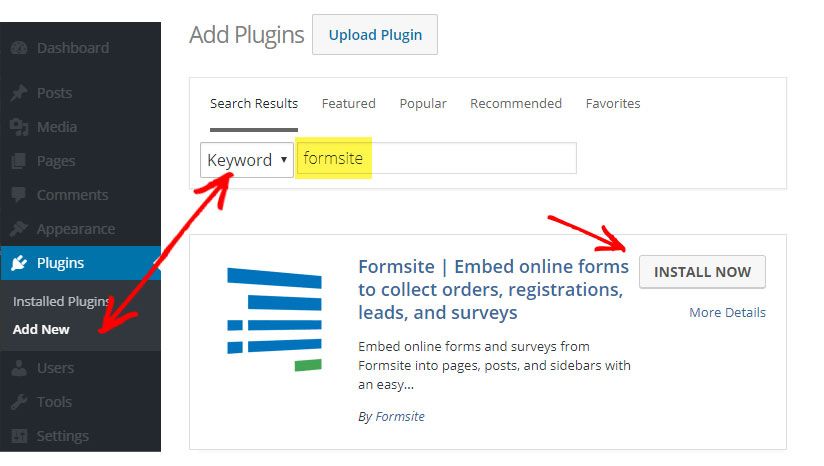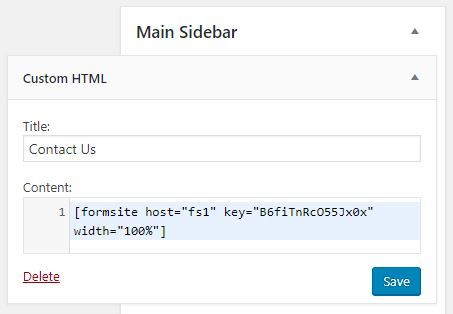WordPress Plugin for Embedding Forms With a Shortcode
Formsite forms are popular with website building services like WordPress, in part due to the easy embedding. Form owners can copy and paste the embed code provided with every form to display the form on the website. Viewing the form as part of the site itself makes for a seamless and convenient user experience. The WordPress plugin makes it even easier for WordPress sites to display Formsite forms.

Most website building sites have ways to add HTML and/or Javascript code. Some examples are:
- Raw HTML or script plugins
- Iframe widgets
- Text editors
- Template files
WordPress provides a way to use plugins to include content with their own code, called shortcodes. Formsite’s WordPress plugin lets site builders embed their forms anywhere using a shortcode.
WordPress Plugin
The Formsite plugin works with all WordPress sites, including wordpress.com and self-hosted sites. The easiest way to add forms to a WordPress site is with the Formsite plugin.
Start by searching the plugin directory for the Formsite plugin, then click the button to install. After installing and activating the plugin, copy and paste the Formsite shortcode into the website content.

Using the Form’s Shortcode

The WordPress shortcode appears in the form’s Share -> WordPress page. Copy the code and paste into the WordPress site where the form should appear. Use the shortcode in virtually any content area in the site including:
- Pages
- Posts
- Sidebars
- Widgets
- Templates
Tips
- The ‘width’ parameter in the shortcode should almost always be 100% to fill the embedding area. Set the width of the embedding area using the website’s settings and the form will fill the area.
- Be sure to not put a ‘height’ attribute on the embedding container. The embed code calculates the height for the form and sets the embedding container’s height. If you use a height definition—even if it’s ‘auto’—the embed code can’t overwrite it.
- Currently the other embed code parameters (prePopulate, for example) need the original WordPress embed instructions.